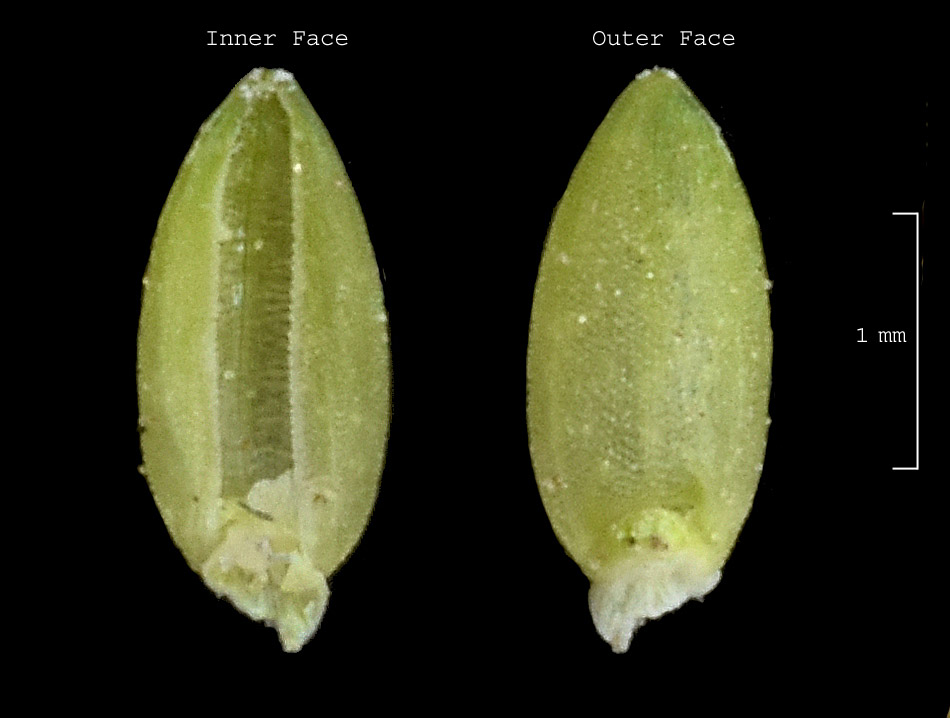 |
Paniceae: Answers to key questions
leading to this tribe.
 | Mature inflorescence, if breaking into units, then the units not as
below; NOT [Mature inflorescence breaking into spikelet units consisting
of a sessile fertile spikelet, a hairy pedicel with or without a sterile
spikelet at tip, and a hairy rachis joint, all arising at the same point
(a node) in specialized panicle branches called rames] |
 | Spikelets usually
dorsally compressed, appearing 1-flowered but containing 1 fertile
floret and 1 sterile floret, the latter attached to the base of fertile
floret opposite the upper glume, resembling the upper glume, and
together with the upper glume enveloping the fertile floret; lower
glumes minute (sometimes absent) to 3/4 as long as upper glumes and
typically wrapping most of the way around the pedicel at base; fertile
floret seed-like with chartaceous-indurate lemma and palea enclosing
flower and fruit; disarticulation below the glumes with rare exceptions; NOT
[Spikelets not as above; sterile florets if present, either located
distal to the fertile floret(s) on the rachilla or paired and attached
at the base of a single fertile floret, not paired with the upper glume
as above; lemma and palea variously textured, enclosing the flower or
not; disarticulation usually above the glumes]
|
|
 |
Setaria: Answers to key questions
leading to this genus (in tribe Paniceae).
 | Spikelets with bristles attached in groups at base; panicle dense and
spike-like; NOT [Spikelets lacking bristles but rachis and pedicels may
have scattered, long, papillose-based hairs; panicle not spike-like]
|
 |
Curtiseta: Answers to key questions
leading to this species (in genus
Setaria).
 | Upper glumes about as long as the spikelet and mostly covering the
inconspicuously transversely rugose lemma surface of the fertile floret;
spikelets 1.8-2.2 mm long; bristles in groups of 1-3, usually green,
purplish or tawny; leaf blades glabrous; leaf sheath margins long
pubescent or ciliate distally; sterile florets lacking stamens, reduced
to a lemma and a vestigial palea about 1/3 as long as lemma, or absent;
NOT [Upper glumes about 1/2 as long as the spikelet and revealing the
conspicuously transversely rugose lemma surface of the fertile floret;
spikelets 2-3.5 mm long; bristles usually in groups of 4 or more,
maturing to distinctive golden yellow to brownish yellow; leaf blades
long villose at base on adaxial surface and sometimes pilose distally;
leaf sheath margins not ciliate or pubescent distally; sterile florets
usually staminate, their paleas well developed, about as long as the
lemma]
|
|
|

